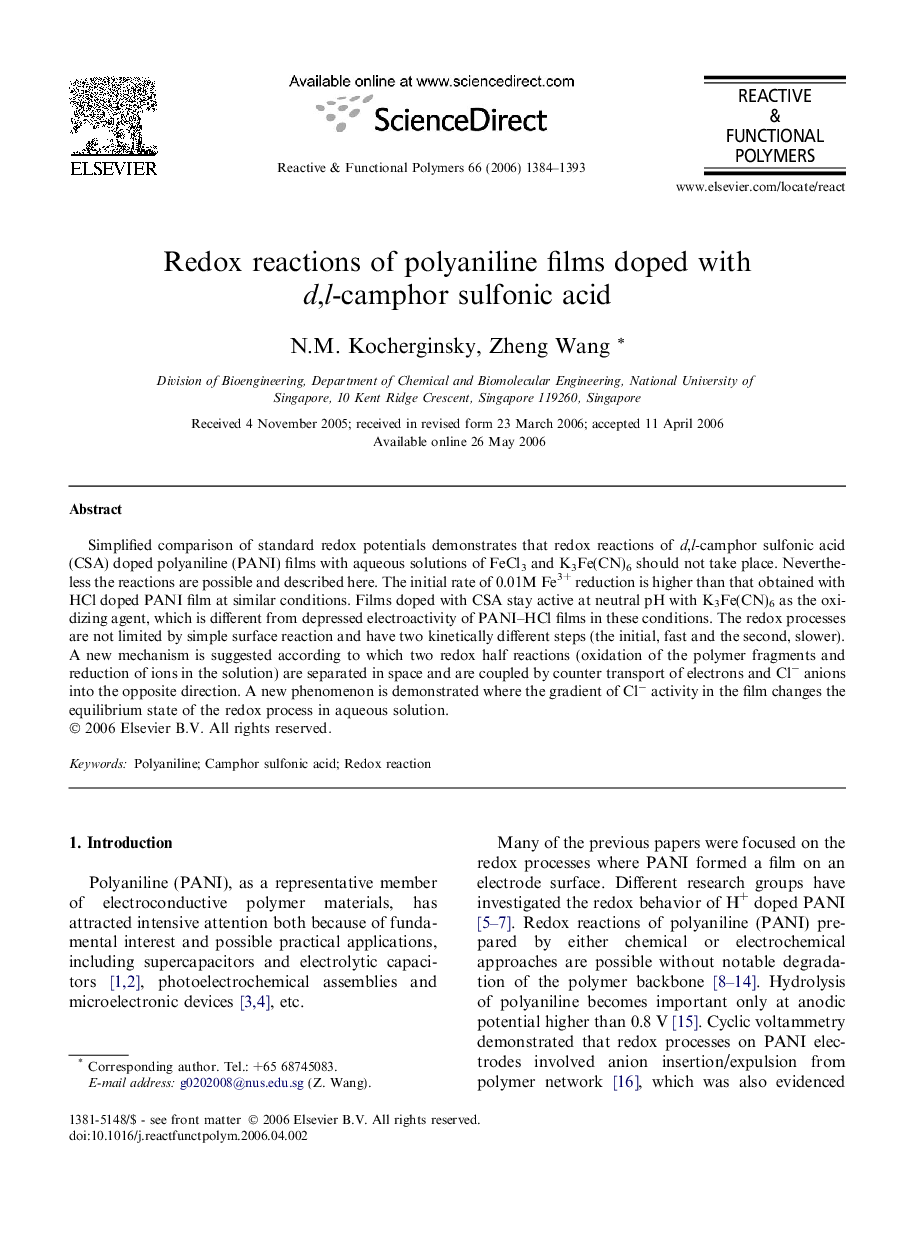| Article ID | Journal | Published Year | Pages | File Type |
|---|---|---|---|---|
| 5211714 | Reactive and Functional Polymers | 2006 | 10 Pages |
Abstract
Simplified comparison of standard redox potentials demonstrates that redox reactions of d,l-camphor sulfonic acid (CSA) doped polyaniline (PANI) films with aqueous solutions of FeCl3 and K3Fe(CN)6 should not take place. Nevertheless the reactions are possible and described here. The initial rate of 0.01M Fe3+ reduction is higher than that obtained with HCl doped PANI film at similar conditions. Films doped with CSA stay active at neutral pH with K3Fe(CN)6 as the oxidizing agent, which is different from depressed electroactivity of PANI-HCl films in these conditions. The redox processes are not limited by simple surface reaction and have two kinetically different steps (the initial, fast and the second, slower). A new mechanism is suggested according to which two redox half reactions (oxidation of the polymer fragments and reduction of ions in the solution) are separated in space and are coupled by counter transport of electrons and Clâ anions into the opposite direction. A new phenomenon is demonstrated where the gradient of Clâ activity in the film changes the equilibrium state of the redox process in aqueous solution.
Related Topics
Physical Sciences and Engineering
Chemistry
Organic Chemistry
Authors
N.M. Kocherginsky, Zheng Wang,
